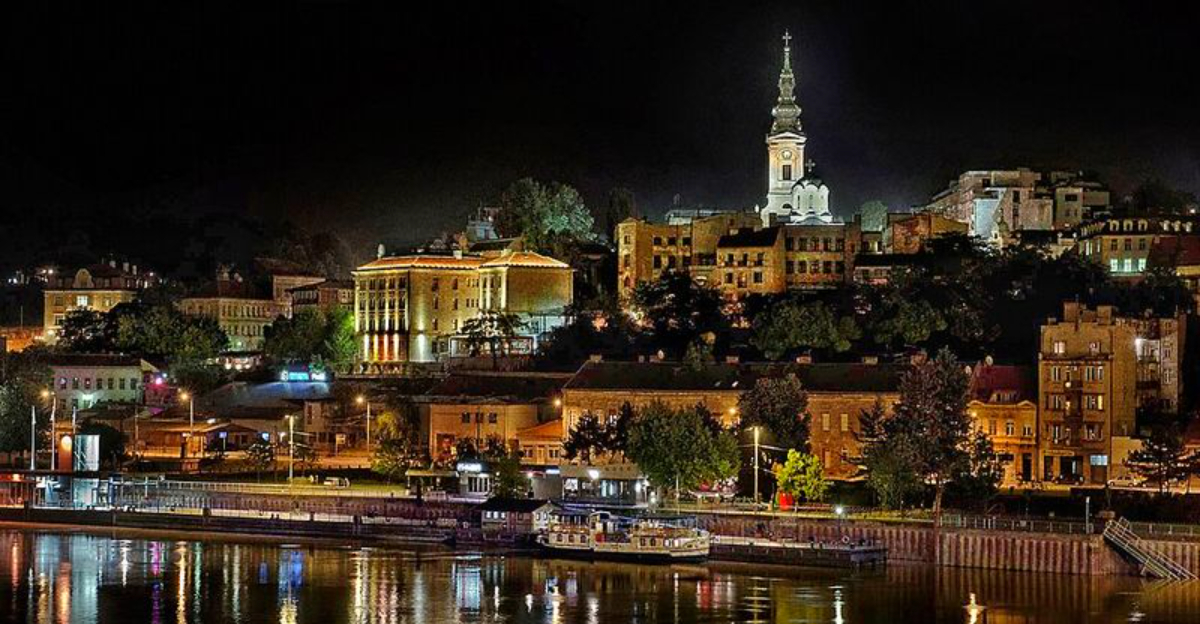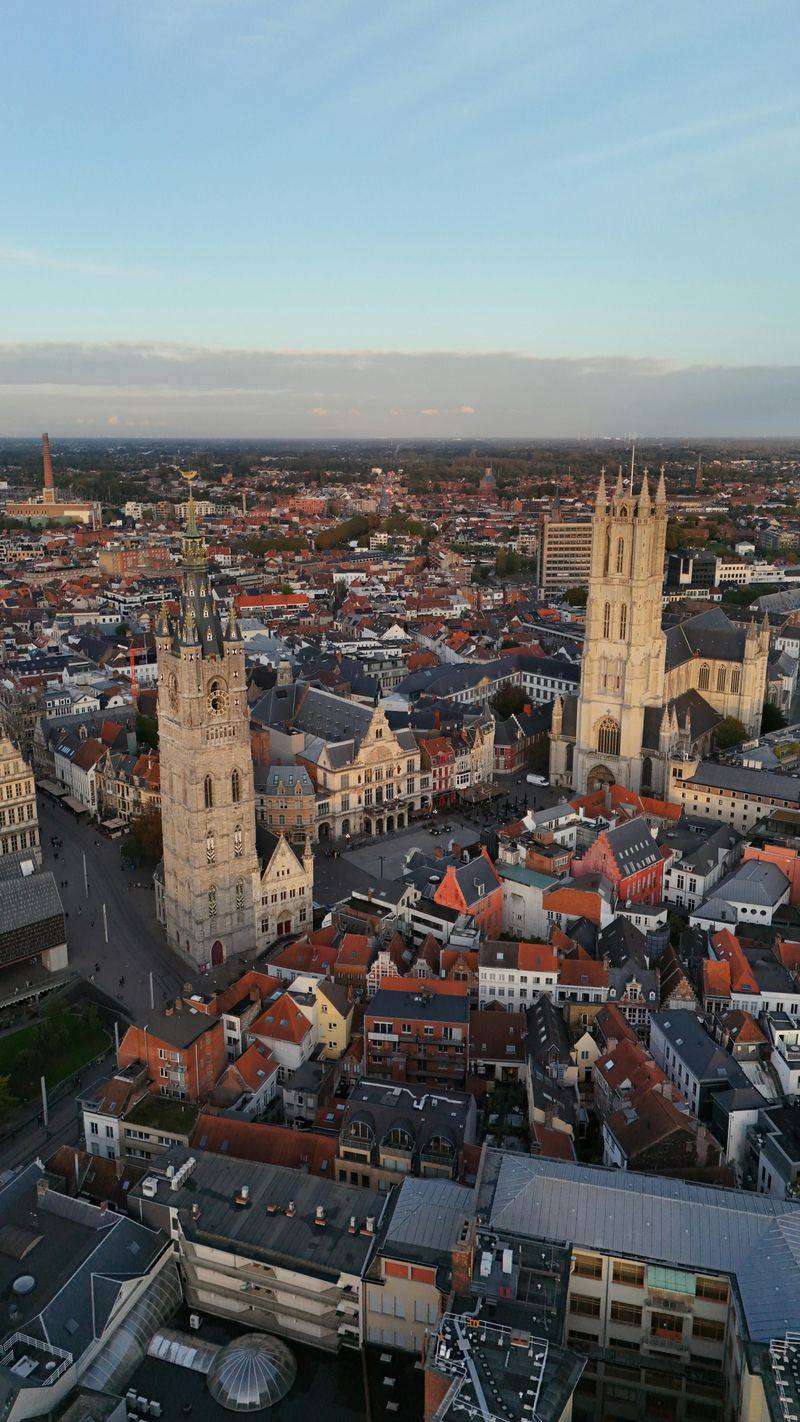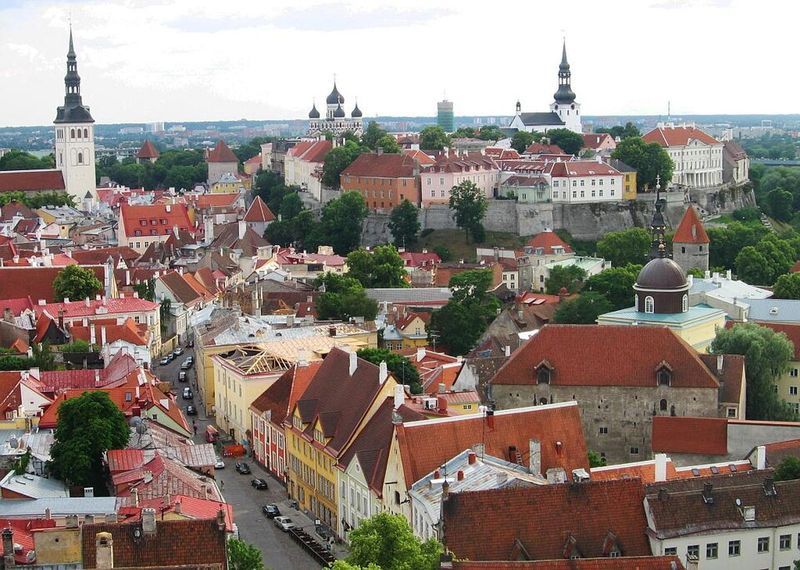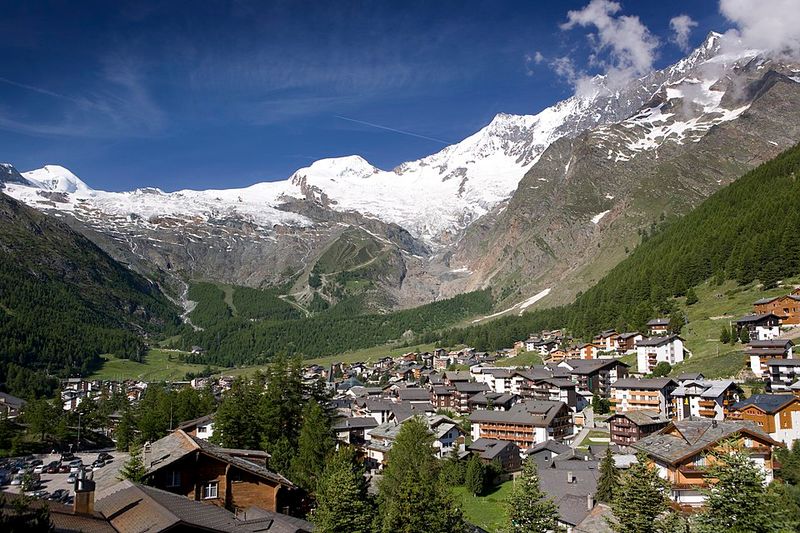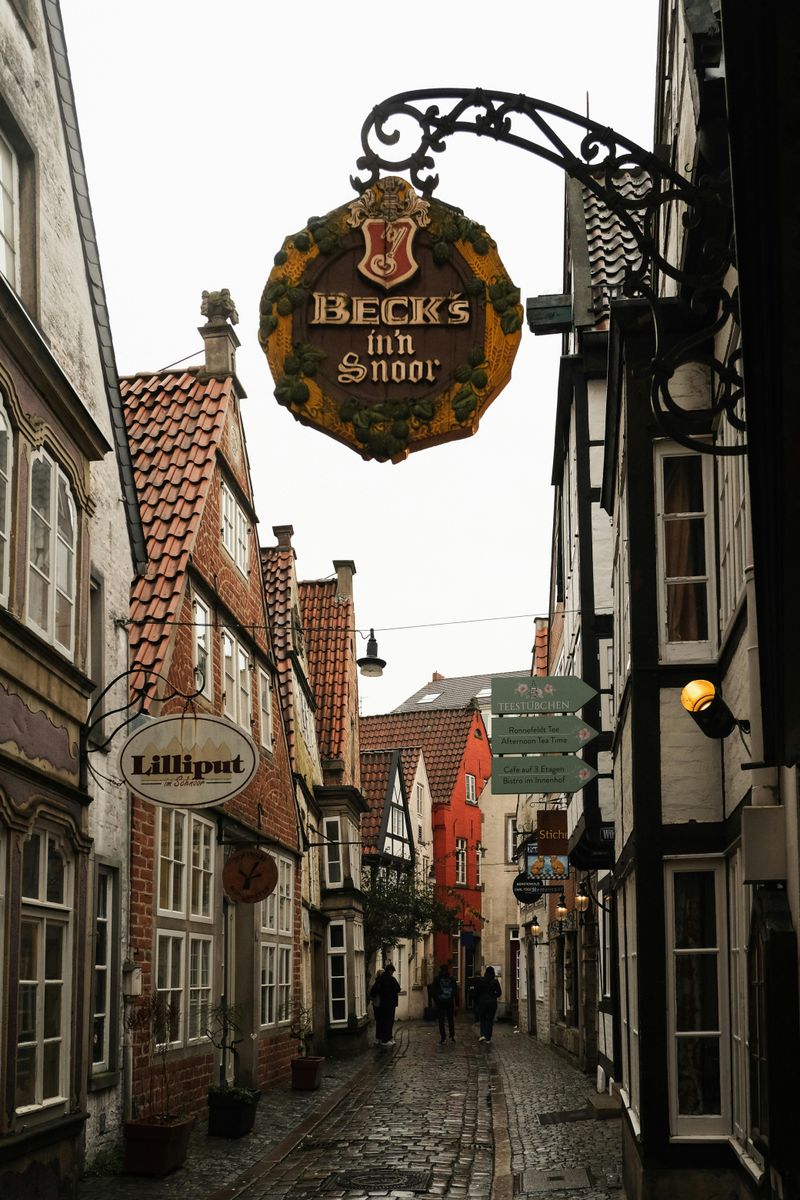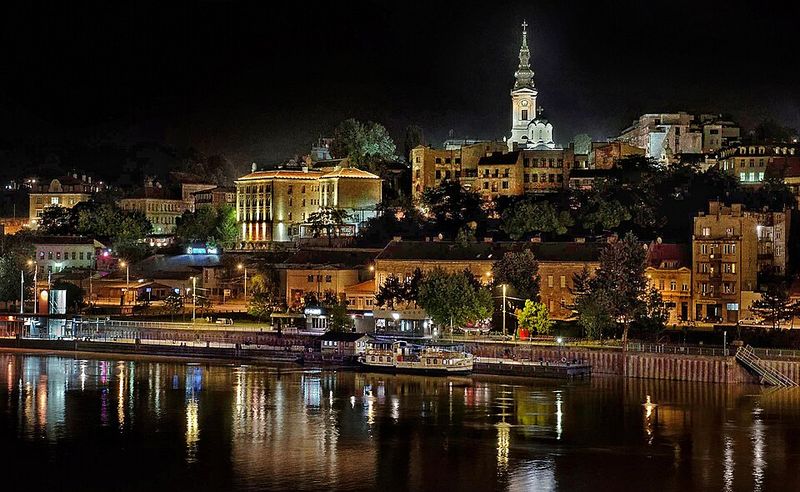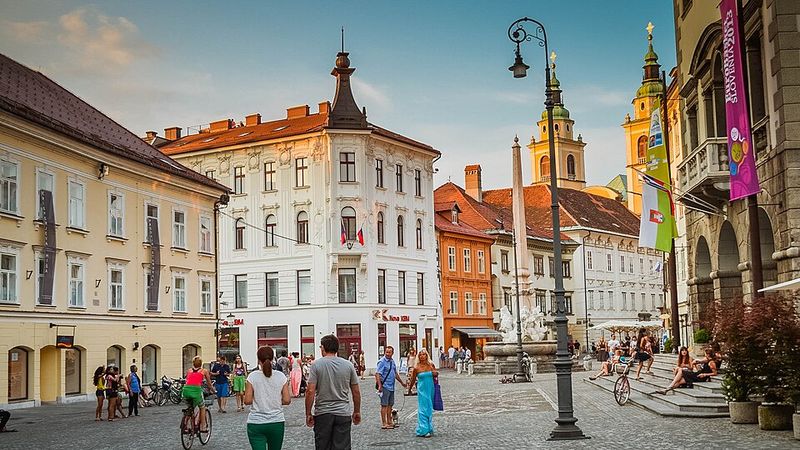Europe is famous for Paris, Rome, and London, but some of the continent’s most magical places remain wonderfully undiscovered. Hidden gem cities offer authentic experiences, fewer crowds, and often lower prices while delivering just as much beauty and culture. Whether you crave medieval architecture, stunning natural landscapes, or vibrant local scenes, these lesser-known destinations will surprise and delight you at every turn.
1. Ghent, Belgium
Ghent offers all the fairytale charm of its famous neighbor Bruges but without the overwhelming tourist crowds.
At the heart of the city stands Gravensteen, a genuine 12th-century moated castle where you can explore towers and dungeons. Gothic churches pierce the skyline while cozy brewpubs invite you to taste local Belgian beers.
The city pulses with student energy thanks to its large university, creating a youthful vibe alongside ancient history. Cobblestone streets lead to hidden courtyards and local markets where residents still shop daily.
2. Budapest, Hungary
Budapest splits into two distinct personalities separated by the majestic Danube River. Buda offers hilltop castles and peaceful residential streets, while Pest buzzes with nightlife and grand boulevards.
What makes this city truly special are its thermal baths fed by natural hot springs beneath the city. After exploring ornate buildings inspired by both Middle Eastern and European designs, you can soak in centuries-old spa waters.
The cultural scene here rivals any major European capital, with world-class opera, museums, and ruin bars housed in abandoned buildings. Prices remain surprisingly affordable compared to Western European cities.
3. Tallinn, Estonia
Step through ancient stone walls and you’ll find yourself in one of Europe’s best-preserved medieval cities. Tallinn’s Old Town feels like a living museum where merchants might appear around any corner.
Colorful buildings with red-tiled roofs cluster along winding cobblestone streets that lead to hidden courtyards. Despite its fairytale appearance, the city embraces modern technology and design, creating an intriguing contrast.
Because it sits on the Baltic Sea, Tallinn remains relatively untouched by massive tourism waves. Local cafes serve hearty Estonian food while galleries showcase contemporary Baltic art in historic settings.
4. Toulouse, France
They call it La Ville Rose, and once you arrive, you’ll understand why. Thousands of buildings constructed from distinctive pink terracotta bricks give the entire city a warm, rosy glow, especially at sunset.
Unlike Paris with its frantic pace and endless tourist lines, Toulouse moves at a relaxed southern rhythm. Wide boulevards lead to intimate squares where locals gather at outdoor cafes to enjoy regional specialties like cassoulet.
The city’s aerospace industry brings an unexpected modern edge to its historic core. Canal-side walks, vibrant markets, and excellent museums make this southwestern French gem absolutely worth discovering.
5. Saas-Fee, Switzerland
Nestled in a valley surrounded by thirteen peaks over 4,000 meters high, Saas-Fee feels like nature’s secret hideaway. While winter brings skiers from around the world, the off-season reveals an even more magical side of this car-free village.
Traditional wooden chalets line pedestrian streets where the only sounds are flowing streams and distant cowbells. You can ride a cable car to the world’s highest revolving restaurant and watch the Alps spin slowly around you.
Summer hiking trails wind through wildflower meadows with glacier views at every turn. The peaceful atmosphere here offers a complete escape from busy city life.
6. Bremen, Germany
This northern German port city carries an authentic character that larger German destinations have lost to tourism. Bremen’s compact historic center features the fairytale-perfect Town Hall and the statue of Roland, both UNESCO World Heritage sites.
The famous Bremen Town Musicians statue commemorates the Brothers Grimm tale, delighting visitors young and old. Narrow streets in the Schnoor Quarter wind between tiny houses that once belonged to fishermen and craftspeople.
Unlike Munich or Berlin, Bremen moves at an unhurried pace where locals actually outnumber tourists. Riverside beer gardens and traditional restaurants serve northern German specialties in genuinely welcoming atmospheres.
7. Granada, Spain
The Alhambra palace complex alone justifies a trip to Granada, but this Andalusian city offers so much more. Moorish influence colors everything from the intricate tilework to the winding streets of the ancient Albaicín neighborhood.
Free tapas arrive with every drink ordered at local bars, a tradition that makes dining here both delicious and affordable. Flamenco performances in cave venues carved into hillsides create unforgettable evenings under starry skies.
Snow-capped Sierra Nevada mountains provide a dramatic backdrop to this southern Spanish treasure. Many travelers rush between Madrid and Barcelona, completely missing Granada’s magical blend of cultures and centuries.
8. Belgrade, Serbia
Raw energy pulses through this Balkan capital where layers of history stack upon each other like geological strata. Ancient fortresses overlook the meeting point of two great rivers, while nearby streets buzz with some of Europe’s best nightlife.
Belgrade has witnessed empires rise and fall, leaving behind a fascinating mix of architectural styles and cultural influences. The city’s growing arts scene transforms abandoned industrial spaces into galleries and creative hubs.
Locals possess a warmth and directness that feels refreshing after more tourist-focused cities. Affordable prices, excellent food, and genuine authenticity make Belgrade increasingly popular among travelers seeking something different.
9. Edinburgh, Scotland
A volcanic rock crowned by an imposing castle dominates the skyline of Scotland’s capital. While Edinburgh attracts visitors, especially during its famous festivals, the city retains an authentic character that many popular destinations have lost.
Medieval closes and wynds twist between buildings in the Old Town, hiding cozy pubs and independent shops. The newer Georgian sections display elegant architecture and peaceful gardens where locals walk their dogs.
Scottish history comes alive here through museums, ghost tours, and traditional music sessions in neighborhood pubs. Beyond the Royal Mile’s main attractions, residential areas offer genuine glimpses into contemporary Scottish life.
10. Riga, Latvia
More than 800 Art Nouveau buildings give Riga one of Europe’s most impressive collections of this decorative architectural style. Elaborate facades feature mythological figures, geometric patterns, and organic motifs that demand your attention at every corner.
The medieval Old Town centers around cobblestone squares where outdoor cafes serve both traditional Latvian dishes and innovative modern cuisine. A burgeoning creative scene has transformed this Baltic capital into a destination for food lovers and design enthusiasts.
Riga’s affordability compared to Western European cities makes it perfect for budget-conscious travelers. The blend of Soviet-era history, medieval charm, and contemporary culture creates a uniquely layered experience.
11. Ljubljana, Slovenia
Slovenia’s compact capital feels more like a large village than a European capital city. The car-free city center allows pedestrians and cyclists to rule charming streets that follow the curves of the Ljubljanica River.
Lovely bridges designed by architect Joze Plecnik connect both sides of the waterway, each with its own character and story. A hilltop castle provides panoramic views while the riverside below fills with outdoor cafes and weekend markets.
Ljubljana takes its environmental responsibilities seriously, earning recognition as a green capital with extensive parks and sustainable practices. The relaxed pace and manageable size make it perfect for slow, meaningful exploration.
12. Porto, Portugal
Colorful buildings cascade down steep hillsides to meet the Douro River in Portugal’s second city. Porto produces the fortified wine that bears its name, and riverside cellars offer tastings with stunning views across the water.
While Lisbon captures most international attention, Porto charms with a grittier, more authentic personality. Azulejo tiles decorate churches and train stations, creating blue-and-white masterpieces that photograph beautifully.
The food scene here has exploded recently, with traditional tascas serving alongside innovative restaurants pushing Portuguese cuisine forward. Narrow streets in the Ribeira district invite aimless wandering that always leads to delightful discoveries.
